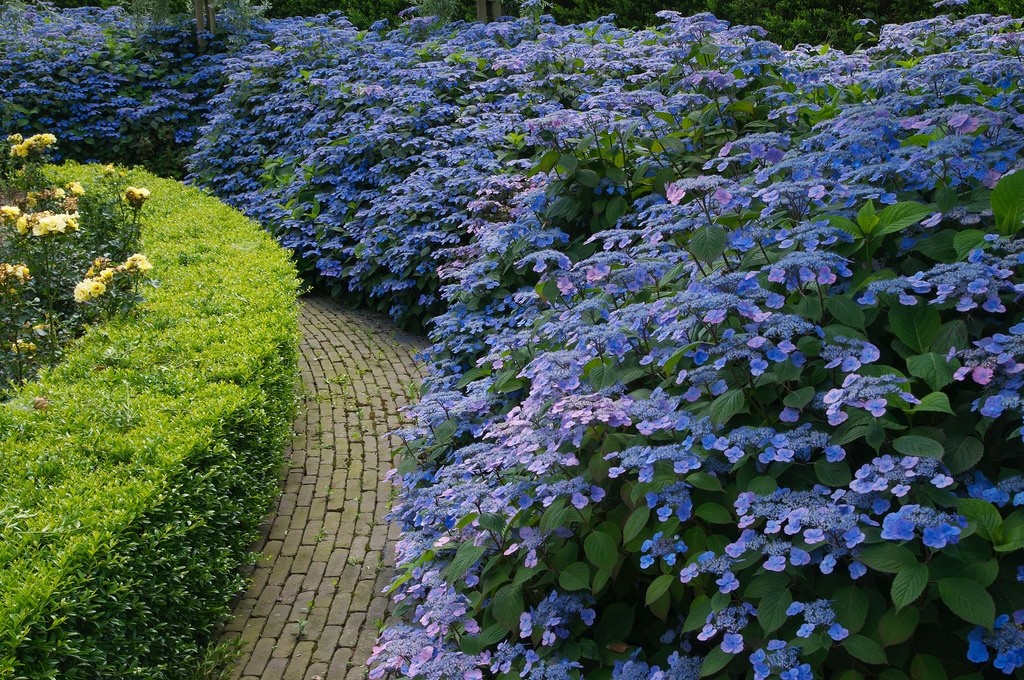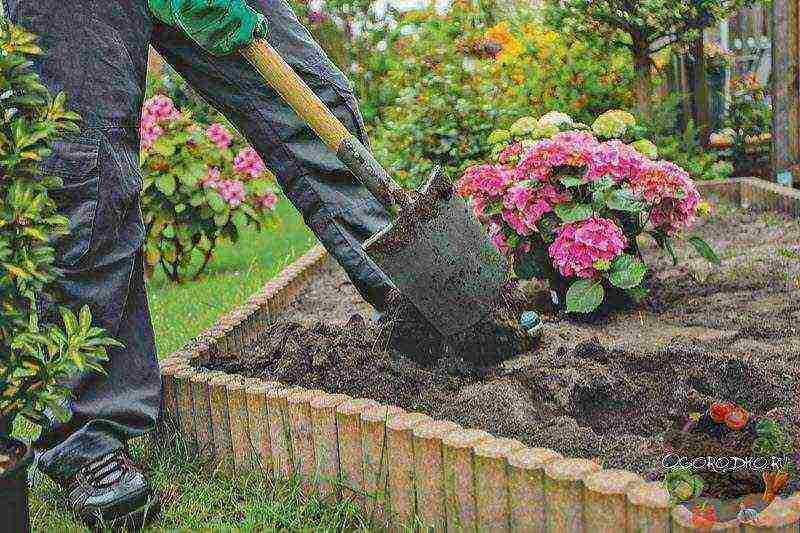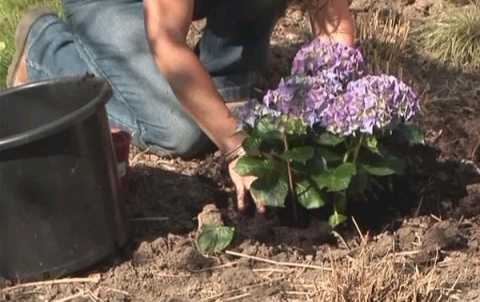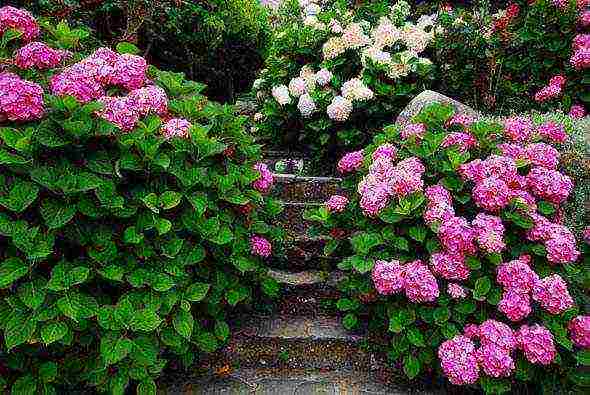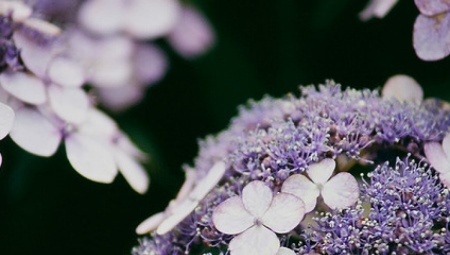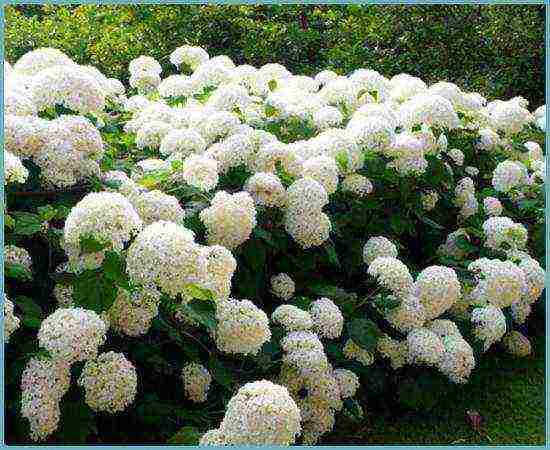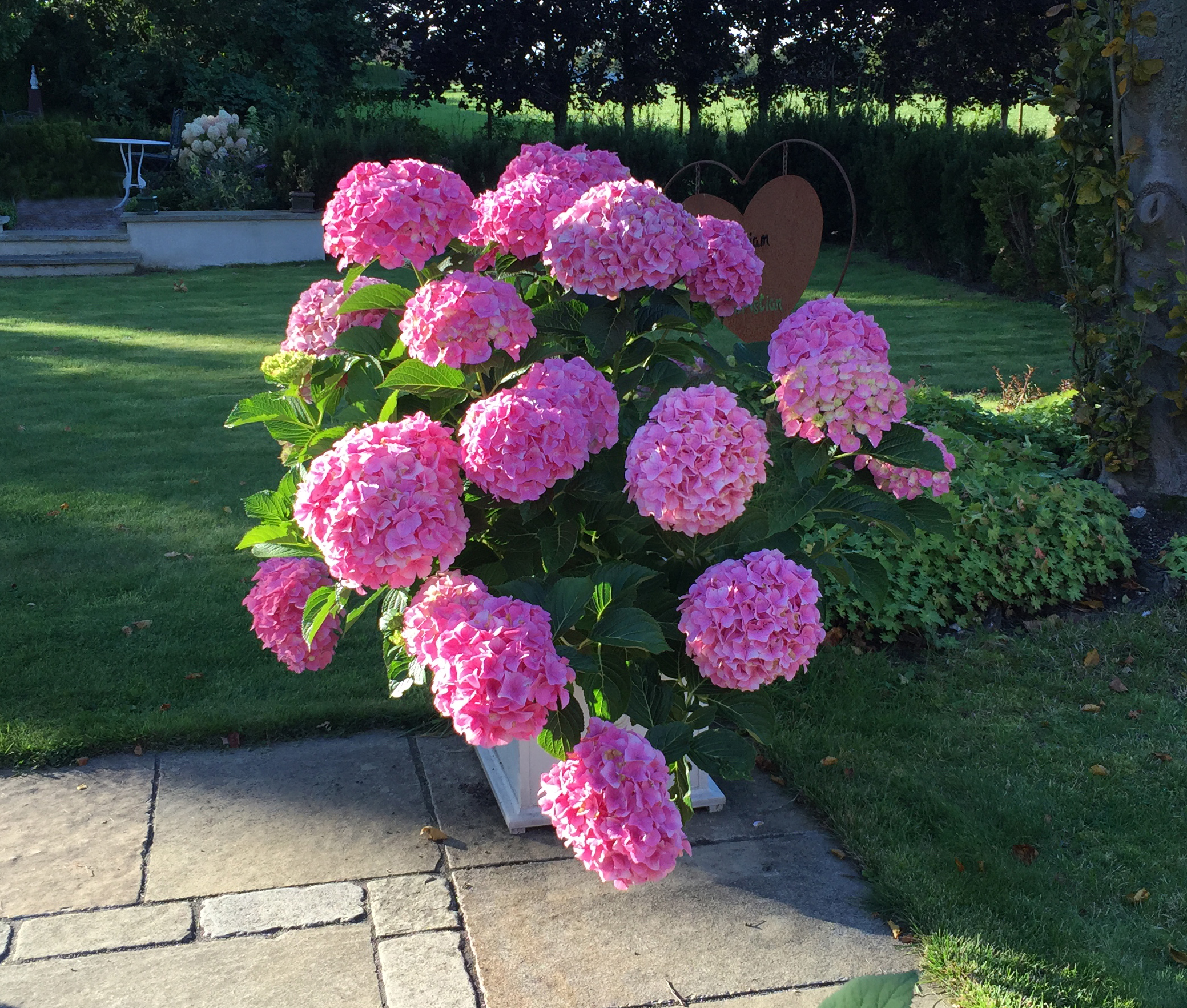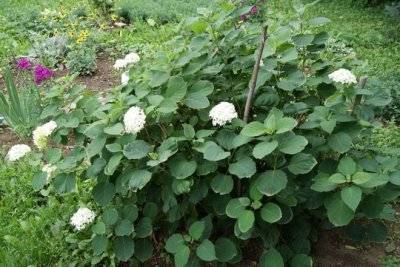Reproduction
The plant reproduces in various ways. The gardener selects the most suitable method individually.
Growing from seeds
The method allows you to get a large amount of planting material. For propagation, seed material can be purchased at the store or collected by yourself. To obtain seedlings, perform the following actions:
- Seeds are planted in March.
- A nutrient mixture is placed in a container, which consists of peat, deciduous soil and humus in equal proportions.
- Seeds are placed in the soil to a depth of no more than 1 cm.
- Sprinkle with a layer of nutrient mixture and watered.
- Put glass on top and place the container on the windowsill.
- Every day, open the glass for half an hour and make sure that the soil is moist.

Propagation using seeds
When the leaves appear, the seedlings are planted in separate pots. In the spring, when the soil warms up, the seedlings are planted. If necessary, use a shelter for the night in the form of a can or a plastic bottle.
Cuttings
For propagation by cuttings, a healthy shoot must be used. Cuttings are carried out in the summer. 2 buds are left on the handle, the lower leaves and buds are cut off. The stalk is placed in the Kornevin preparation until the roots appear. After that, the cuttings are planted in the ground. Watering the cuttings is necessary daily. In autumn, young seedlings are covered with agrofibre and spruce branches. In the spring, young bushes are planted in a permanent place of growth.

Propagation by cuttings
Dividing the bush
For reproduction, bushes are used from the age of 3 years. To do this, the bush is dug up and divided into parts. Each part should have a kidney. The bushes are planted and watered regularly.
Reproduction by dividing the bush
It is interesting! Reproduction in this way is carried out in spring and autumn. The divided parts are recommended to be treated with a light manganese solution before planting.
Layers
For reproduction, branches are used from the age of 1 year. The shoot is bent to the soil and fixed with staples
The place of contact is carefully cut with a blade and sprinkled with soil. Carry out the procedure in the fall or spring
Ready seedlings are transplanted to a new growth site after separation from the mother bush.

Breeding method by layering
Varieties
Hydrangea serrata Preciosa
Sprawling bush up to 2.5 meters in height. The flowers are sterile, greenish, pink or blue; by autumn they turn crimson. Green leaves turn burgundy in autumn. Prefers partial shade, moist acidic soil. Frost resistance - up to -23 °.
Hydrangea serrated bluebird
Wide low spreading shrub up to 1.5 m high and wide. In the inflorescence, fertile flowers are red, lilac with bluish stamens. Sterile flowers are white, blue, lilac. The leaves are green and red with a red shank. Loves moist soil and light. Transfer temperature -18 °.
Hydrangea serrated vierle
Miniature bush with blue flowers. Green foliage turns purple or burgundy in autumn. Finicky. Needs to maintain constant soil moisture, fertilizer, partial shade. Not hardy.
Landing
It is carried out from April to May in a hole with a depth of 10 cm greater than the length of the root system. Before planting, the soil is loosened, mineral fertilizers, peat, sand, humus are added to the hole. The optimal distance between shrubs is at least 1 meter. Within a radius of 3 meters, there should be no large moisture-loving plants that can compete with hydrangea for moisture.

Light mode
Penumbra, diffused light. It is preferable to plant against a wall or fence, which will serve as a shelter for hydrangeas both in summer and in winter.Feels great under a roof canopy, limiting direct sunlight that is harmful to the shrub. It will be a win-win to use a reclining canopy when the sun is at its zenith.
Thermal conditions
Garden varieties have mastered a wider temperature range than indoor varieties - from -2 ° to + 25 °. It is possible to reduce the destructive effect of high temperatures in summer by watering and folding canopy two or three times a day. It must be remembered that the main guideline for starting the preparation of hydrangeas for wintering is the night temperature below -2 °.
Watering
The serrated hydrangea is moisture-loving and requires abundant daily watering.
During dry summers, it is especially important to maintain a constant moderate soil moisture. At + 30 ° and above, three times watering is shown, at + 25 ° - two times
Application of sprinklers is possible
The use of sprinklers is possible.
Fertilizer / feeding
Fertilization is carried out three times a year: during planting, in the "bud" period and at the beginning of flowering. The simplest fertilizer is a mixture of peat, humus and dry leaves in a 2: 1: 2 ratio. When planting, the mixture fills the space free from the roots in the hole.  During the periods of bud ripening and flowering, fertilizer is applied to the root space under the bush. To give it a liquid consistency, you need to fill a five-liter bucket half-filled with the mixture to the brim with compost diluted with water.
During the periods of bud ripening and flowering, fertilizer is applied to the root space under the bush. To give it a liquid consistency, you need to fill a five-liter bucket half-filled with the mixture to the brim with compost diluted with water.
Nitrogen-containing fertilizers are applied strictly according to the instructions, they do not need to be abused if you want to get abundant flowering.
Top dressing is carried out once a week. In the role of top dressing, compost and dry foliage are used.
To loosen the earth, sawdust and sand are added to the compost.
Bloom
The flowering period is July and August.
Once every three days, water one side of the bush with a slightly pink solution of potassium permanganate, and with a solution of aluminum sulfate on the other, and you will get both blue and pink flowers on one plant. The composition of the solution: 2-3 grams of powder per 1 liter of water.
Reproduction
Hydrangea propagates by seeds and cuttings.
Cuttings are prepared before the buds open. To do this, in a young branch, select an area with 1-2 knots and leaves. Cross the branch without offset from the top node at an angle of 90 °. Cross the branch obliquely under the lower node, cut off the massive leaves, leaving a few small ones.
Treat the cuttings planted to a depth of 1-2 cm with indoleacetic acid and spray and water daily.
Pruning
Performed in September before wintering. To do this, remove 2-3 upper nodes with pruning shears, align the "cap" of the bush. Branches without inflorescences and old dried leaves and branches are cut off.
In the fall, pruning is mandatory, its purpose is to reduce the area of moisture evaporation from the wintering plant. In the summer, the bush is pruned at will - to give shape and for more tillering. Once every 2 years, a radical cutting off of dead shoots is required.
Caring for different types of hydrangeas is almost the same. All the most important rules that should be followed when growing this beauty can be found in a separate article.
Landing
The main steps for planting the Bluebird serrated hydrangea are in many ways similar to the work performed in the process of planting other varieties of ornamental shrubs on the site, with the exception of certain nuances in terms of timing and the very algorithm of planting events.
Landing dates
Despite the rather mediocre frost resistance of the Bluebird hydrangea, it can be planted both in spring and autumn, but as for the latter option, it will be more suitable for the southern territories of the Russian Federation.
Find out how fast a hydrangea bush grows.
In the central regions (including in the Moscow region), as well as in some northern regions (located closer to the central part of the country), it is advisable to plant seedlings in late April or early May, so that by the next winter cold they have time to adapt in a new place and are not frozen.
Autumn planting of plants in the southern regions of Russia is usually carried out in early - mid-September, provided that at least two months remain before subzero temperatures.

Landing rules
To get a beautiful flowering shrub of Bluebird hydrangea, it is important to know about some of the rules for the preparation and direct planting of young plants on the site. Did you know? The appearance of blue tints in the color of hydrangea flowers is due to the consumption of aluminum from acidic soils
This is one of the few plants capable of accumulating this element.
This is one of the few plants capable of accumulating this element.
Did you know? The appearance of blue tints in the color of hydrangea flowers is due to the consumption of aluminum from acidic soils. This is one of the few plants capable of accumulating this element.
The main recommendations in this case are as follows:
- When choosing a place for planting hydrangeas, give preference to sheltered from the wind, slightly shaded areas, growing on which the shrub can be illuminated by diffused sunlight.
- The dimensions of the average planting hole should correspond to 50 cm in diameter and at least 40 cm in depth, although when using a seedling with a closed root system, you should focus on the size of the earthen coma already in the container (in this case, the depth of the hole for planting should be 10-15 cm deeper than the bottom of the seedling).
- To create a suitable soil cushion, it is better to mix together 2 parts of humus and leafy earth, one part of peat and sand, and then add another 20 g of urea or complex mineral fertilizers to them.
- Before planting, it is useful to soak the roots of the plant for several hours in a solution of a root stimulant (for example, in "Kornevin"), and moisten the soil in the hole well.
- Covering the rhizome of the hydrangea with soil, make sure that its root collar remains 2 cm above ground level. After the next watering, it will drop to ground level.
- To keep moisture in the soil for a long time, the near-trunk zone of the bush is mulched with a 5-centimeter layer of crushed pine bark or sawdust.
- If hydrangeas are to be used in the composition, then at least one and a half meters should be left between neighboring plants. The process of planting bushes of the Bluebird variety cannot be called a very difficult task, and when preparing everything necessary in advance, it will not take more than 10-15 minutes.

Plant care
For rapid growth, it is important to follow all the rules of care. In the absence of timely care, the leaves of the plant are small, the buds are formed in a small amount
Fertilizer and feeding
For top dressing, you should use preparations that are designed specifically for this type of crop. Fertilizers are applied after planting so that the bush gains the necessary strength, before flowering and in autumn. You can apply nitrogen fertilizers, which are diluted with water, and applied during watering.
Mulching and loosening
Loosening is carried out if necessary. All weeds are removed and the soil is fluffed up. Then the roots receive the required amount of oxygen. Mulching is carried out with sawdust or coniferous needles. The layer of mulch should be at least 6 cm. This will not only reduce the risk of pests, but also retain moisture.

Mulching hydrangea
Pruning
The pruning procedure is carried out in the fall, after the plant has faded. All shoots are cut into 3 buds. All damaged branches are also completely removed.

Bush pruning procedure
Important! To form a bush, the shoots must be all at the same level. This will allow you to get a beautiful bush in the form of a hemisphere in the spring.
Preparing for winter
The serrata hydrangea tolerates low temperatures well; the Bluebird variety does not require special shelter for the winter. For cold regions, the following type of shelter is used:
- bring in nutrients;
- pruning the bush and removing all broken branches;
- shoots are bent to the ground and fastened with special staples;
- the bush is covered with agrofibre and insulated with spruce branches.

Shelter culture for the winter
In severe frosts, the bushes are additionally covered with an old blanket or other warm things.
Helpful hints
To avoid mistakes in growing such a beautiful plant, use the following tips.
- Do not prune the hydrangea for the first 2 years.
- Do not pick off branches - just cut them off with a sharp and clean tool. Treat all cuts, split hemp with garden pitch or chopped coal.
- You need to work in dry weather, so as not to bring the fungus to wet sections. The cut is made obliquely, departing from the kidneys by 2-3 cm.
- If the bush is large and healthy, then thinning is carried out gradually, in 2-3 years.
- If the buds are already visible in the spring, but the weather is still cold, then it is worth waiting for the warming, and only then pruning.
Diseases and pests
The list of the most common problems in the cultivation of the described hydrangea includes the following:
- Chlorosis is a disease that manifests itself in the dulling and lightening of the surface of the leaf plates, although the veins remain the same color. To cure the bushes, they are treated twice a day with a solution of potassium nitrate and ferrous sulfate, after dissolving 4 g of each substance in 1 liter of water.
- Powdery mildew is an ailment recognizable by the appearance of yellow and brown spots on the leaves of hydrangea, with a powdery coating on the surface of the lesions. The easiest way to fight will be a daily double spraying of the crown with a mixture of 10 g of laundry soap and 1.5 g of copper sulfate, dissolved in a liter of water.
- The spider mite is a popular pest of horticultural crops, affecting mainly the lower part of the leaf plate. As a result of its activity, the leaves fade, turn yellow and fall off, and if you look closely at them, you can find a brown spider web. In the fight against insects, use the drug "Tiofos" and other similar insecticidal compositions.
As a preventive measure, in early spring, the crown of hydrangeas is sprayed with Karbofos, copper sulfate and Bordeaux mixture, repeating the procedure at intervals of 2 weeks.
Important! Controlling soil moisture in the near-stem zone will help protect flowering shrubs from rot. Water should not stagnate at the plant's rhizome. - otherwise, you will have to organize the removal of moisture from the bush by artificial means, or simply transplant the plant to another place of growth
In general, Bluebird hydrangea is a good solution for decorating a garden or local area. With a comparative unpretentiousness to the growing conditions, the bushes of culture will always delight you with lush and abundant flowers, you just have to give them a little attention
—otherwise, you will have to organize the removal of moisture from the bush by artificial means, or simply transplant the plant to another place of growth. In general, Bluebird hydrangea is a good solution for decorating a garden or local area. With a comparative unpretentiousness to growing conditions, bushes of culture will always delight you with lush and abundant flowers, you just have to pay them a little attention.
Planting and leaving
 Planting hydrangeas in open ground
Planting hydrangeas in open ground
- Plant the serrated hydrangea permanently in late April, early May, or mid September, during periods of moderate temperature.
- Choose an area with diffused sunlight, partial shade is also suitable.
- Plant the hydrangea in a mixture of humus, leafy soil, peat, sand and urea (in a ratio of 2: 2: 1: 1), add mineral fertilizers.
- When planting, leave at least 1.5 meters between the hydrangeas if you are creating a flower arrangement.
- Make sure that the root collar is flush with the ground.
- Water the seedling after planting.
- Mulch the trunk circle.
- Water the hydrangea twice daily if the temperature is over 25 degrees.If the temperature rises above 30 degrees, increase watering up to 3 times a day.
- Loosen the soil around the shrub regularly. Do this carefully, since the serrated hydrangea has a root system close to the surface, so deep loosening is unacceptable.
- Use awnings to create artificial shade during midday, as direct sunlight can damage the plant and ruin its appearance.
- Water the shrub with a mixture of peat, dry leaves and humus (in a 1: 1: 0.5 ratio) diluted in 2.5 liters of water. Do this during bud formation and at the end of flowering.
- Fertilize the plant with compost and dry foliage throughout the flowering period.
- Do not use lime, chalk and wood ash as fertilizers, as hydrangea does not tolerate them.
- Prune your shrub annually. This is best done in the fall.
Pruning adult bush hydrangeas
From the third year, they begin the usual pruning, including:
pruning stimulating powerful growth of flowering shoots (last year's growths on plants are shortened to 2-4 buds, from which new strong flowering branches will grow);
pruning frozen ends of shoots, damaged, dry branches;
thinning and shaping: with thickening, active growth of branches inside the crown, "extra" shoots should be removed without giving the shrub too thick weak for flowering);
rejuvenating pruning: it is advisable to leave 6-10 strong shoots on the bush annually (of which only 2-5 branches from last year's growth), removing the oldest (3-4-year-old) shoots to the base and be sure to cut off branches giving weak young ones to the soil gains.
Care
Hydrangea care is quite simple. It does not require any special skills or knowledge in the field of gardening. This plant is very fond of warmth and moisture, which must be taken into account. In order for more water to get to the root system, it is recommended to regularly loosen the soil around the bush, together with weeding, to a depth of about 5 cm. This will also provide a constant flow of oxygen, which will have a positive effect on the condition of the bush.
Bluebird hydrangea care includes other aspects as well.
Correct watering. For normal development and abundant flowering, the hydrangea must receive a sufficient amount of water, so it should be watered daily. On hot summer days, when the thermometer rises above + 30 ° C, watering should be done three times a day, and if the air warms up to 25 ° C, then twice (morning and evening)
It is important to ensure that the topsoil is always moderately moist. Protection from direct sunlight. Although serrated hydrangea is a fairly light-loving plant, the bright sun can harm it, like most plants.
Although serrated hydrangea is a fairly light-loving plant, the bright sun can harm it, like most plants.
Protection from direct sunlight. Although serrated hydrangea is a fairly light-loving plant, the bright sun can harm it, like most plants.
In this case, the earthen lump dries up faster, the flowers become small and pale, and ugly burns appear on the leaves. If the plant is in an open space, then at noon it should be artificially shaded. For example, a removable canopy. Such care allows you to maintain a decorative look.
Fertilization of a plant occurs in three stages: at planting, when it begins to pick up buds, and at the beginning of flowering. In the last two cases, liquid fertilizers are applied at the root. For example, you can make organic fertilizing by mixing compost diluted in water. The optimal time between feeding is 2 weeks.Fertilizers containing nitrogen and a complex of minerals should be used according to the instructions.
This plant is quite resistant to pests. But it needs to be examined regularly because there is a risk of aphid or powdery mildew infection.
In addition to these basic rules, caring for hydrangea cannot do without pruning and preparing for wintering.

Pruning
Hydrangea serrata requires annual pruning. The best time for this is autumn, when the plant has already bloomed and enters a state of dormancy. You need to use a garden pruner. With the help of such a tool, the upper 2-3 nodes of the shoot are cut off, while trying to give the shrub an elegant "hat" shape. All branches without flowers, dry leaves and dead branches should be removed.
Such care is useful in that after pruning, the area from which moisture evaporates during the winter decreases. Summer trimming of the branches is also allowed to make the bush more branched, lush and even. Also, every two years, a "radical haircut" should be carried out, removing all dead, weak and uneven shoots - this will only benefit the plant, and the hydrangea will be transformed next year.
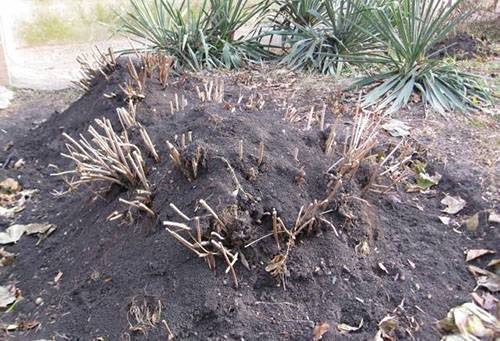
Preparing for winter
Hydrangea serrata becomes more resistant to frost over time, but at a tender age, these plants need special attention before the onset of cold weather. First you need to cut the bush, it is also recommended to feed it with fertilizer based on phosphorus and potassium
There are several ways to protect the bush from low temperatures.
There are several ways to protect the shrub from cold temperatures.
- Spud the plant and cover with polyethylene (up to -5 ° C).
- Tie the branches with a rope, spud and insulate with spruce branches. For additional protection, you can use several layers of polyethylene, fixed on top with boards (down to -15 ° C).
- Bend bunches of 2 branches to the ground and secure with staples. Then insulate with sawdust, coniferous branches or unnecessary warm things. Withstands temperatures down to -20 ° C.
- Wrap the branches of the bush with a metal mesh or line with bricks, and throw old warm clothes on top (up to -30 °).
Correctly and timely performed procedures for preparing hydrangeas for winter will guarantee that the plant will wake up healthy with the spring rays of the sun, and will delight you with its flowering caps in the summer.
Hydrangea serrata Blue Bird is a wonderful plant. Correct fit and maintenance is simple enough. With the onset of July, this bush will bloom with bright caps of amazing shades, and will certainly become the main decoration of the garden.










